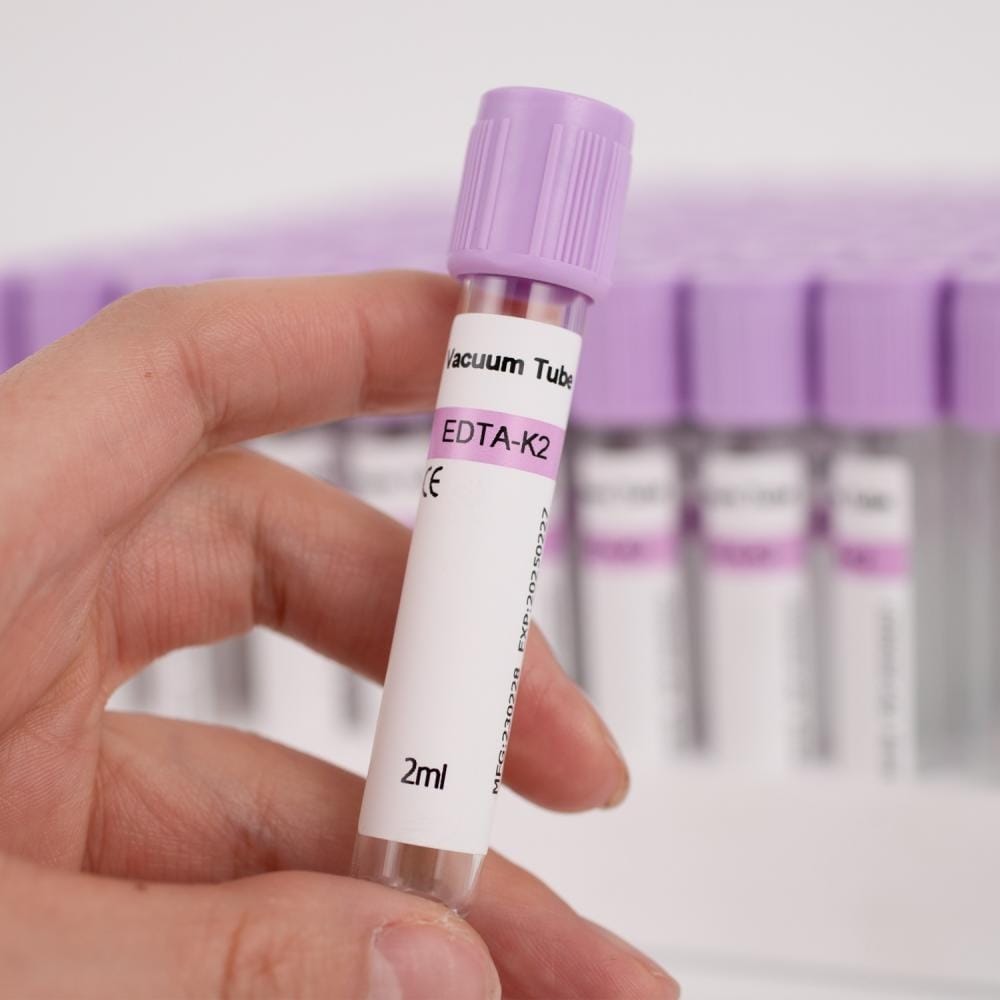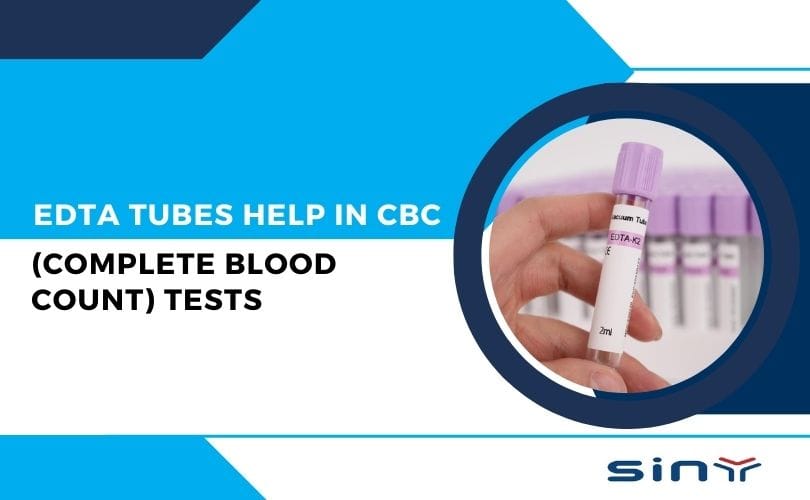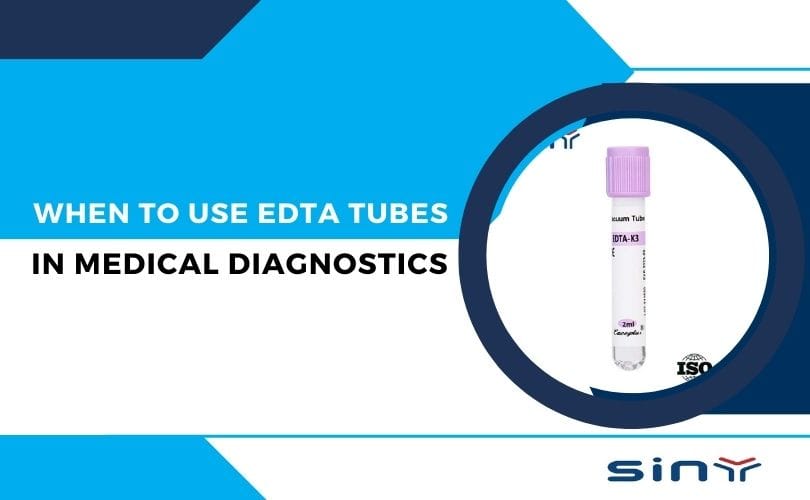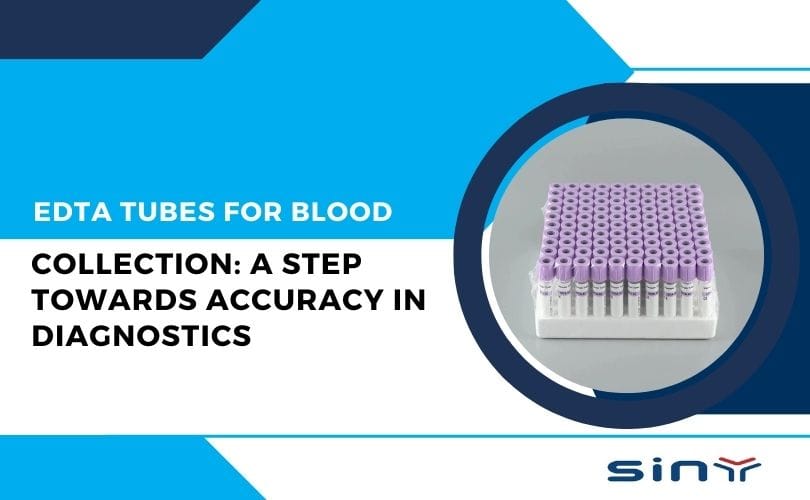EDTA tubes are specialized blood collection tubes that contain ethylenediaminetetraacetic acid (EDTA), a potent anticoagulant crucial for performing Complete Blood Count (CBC) tests and other hematological analyses. Their primary function is to prevent blood coagulation, which is essential for maintaining the integrity of blood samples during collection and transportation.
These specialized tubes not only prevent blood clotting but also maintain the integrity of the sample. Let’s dive into what makes EDTA tubes indispensable for CBC tests and how they contribute to reliable diagnostics.
What Are EDTA Tubes?
EDTA tubes, also known as lavender-top tubes due to their distinctive color, are blood collection tubes containing the anticoagulant Ethylenediaminetetraacetic Acid (EDTA). This compound binds calcium ions in the blood, preventing it from clotting.
Key features of EDTA tubes include:
- Anticoagulant Properties: Keeps blood in a liquid state for accurate testing.
- Preservation of Cellular Components: Ensures white blood cells, red blood cells, and platelets remain stable for analysis.
- Broad Applicability: Used for hematology tests like CBC and blood smear preparations.
Why Are EDTA Tubes Crucial for CBC Tests?
CBC tests evaluate various components of blood, including red blood cells (RBCs), white blood cells (WBCs), hemoglobin levels, hematocrit, and platelets. Accurate results depend heavily on the quality of the blood sample, and that’s where EDTA tubes come into play.

Prevention of Clotting
Blood clotting can interfere with automated analyzers and make the sample unusable for CBC testing. EDTA ensures the blood remains fluid, facilitating accurate cell counts.
Preservation of Cellular Morphology
The EDTA anticoagulant stabilizes blood cells, preventing distortion or degradation. This is crucial for observing cell structure and identifying abnormalities under a microscope.
Reduced Risk of Platelet Aggregation
Platelets tend to clump together when blood is exposed to air. EDTA minimizes this risk, ensuring an accurate platelet count in the Complete Blood Count (CBC) test.
Optimal Sample Stability
EDTA tubes preserve the blood sample for several hours, allowing labs sufficient time to conduct tests without compromising results.
How to Use EDTA Tubes Correctly?
Proper handling of EDTA tubes is essential to maintain sample integrity. Here are some best practices:
- Correct Blood Volume: Overfilling or underfilling the tube can alter the anticoagulant-to-blood ratio, potentially skewing test results.
- Immediate Mixing: Gently invert the tube 8–10 times immediately after collection to mix the blood with the EDTA anticoagulant. Avoid vigorous shaking, as it can damage blood cells.
- Proper Storage: Keep the tube at the recommended temperature and avoid exposing it to extreme conditions.
Advantages of Using EDTA Tubes in Complete Blood Count Tests
EDTA tubes offer a host of benefits that make them a gold standard for CBC and other hematological tests.
- High Accuracy:
EDTA’s ability to prevent clotting and preserve cell morphology ensures reliable test results, making it the preferred choice for medical labs. - Time Efficiency:
Since EDTA tubes maintain sample stability for several hours, labs can efficiently process multiple samples without rushing to meet a short deadline. - Versatility:
Apart from CBC tests, EDTA tubes are also used for tests like blood typing, molecular diagnostics, and cell morphology studies. - Compatibility with Automation:
Modern automated hematology analyzers are calibrated to work seamlessly with EDTA-preserved samples, ensuring fast and accurate results.
How EDTA Tubes Compare to Other Blood Collection Tubes
There are several types of blood collection tubes, each designed for specific purposes. Let’s see how EDTA tubes stack up:
| Tube Type | Additive | Purpose |
|---|---|---|
| EDTA Tube | EDTA (anticoagulant) | CBC, blood smears, molecular tests |
| Serum Separator Tube | Gel/Clot Activator | Chemistry tests, serology |
| Sodium Citrate Tube | Sodium Citrate | Coagulation tests |
| Heparin Tube | Heparin | Blood gas analysis, flow cytometry |
While each tube serves its purpose, EDTA tubes are unmatched for hematological testing due to their exceptional ability to preserve blood cell integrity.
Final Thoughts
EDTA tubes are the backbone of hematological diagnostics, particularly for CBC tests. Their ability to prevent clotting, preserve cell structure, and ensure sample stability makes them a crucial tool in modern laboratories. Whether you’re a healthcare professional or a curious patient, understanding the role of EDTA tubes can give you a deeper appreciation for the intricate processes behind blood testing.
For more insights into EDTA tubes and their applications, check out these helpful resources:
- Learn more about EDTA Tubes and their benefits
- Explore a variety of EDTA tube products
- Detailed medical applications of EDTA tubes
So, the next time you have a CBC test, you’ll know the small yet vital role these lavender tubes play in ensuring accurate results!
Frequently Asked Questions (FAQs)
1. What happens if EDTA tubes are not used for CBC tests?
Using the wrong tube or no anticoagulant can lead to blood clotting, distorted cell morphology, and inaccurate complete blood count (CBC) results.
2. Can EDTA tubes be reused?
No, EDTA tubes are single-use only to ensure sterility and prevent cross-contamination.
3. How long can a blood sample remain stable in an EDTA tube?
Most blood samples remain stable for 4–6 hours at room temperature when collected in EDTA tubes. However, refrigeration can extend this timeframe.
4. Are there any risks associated with EDTA tubes?
When used correctly, EDTA tubes are safe and effective. Over-anticoagulation or improper mixing may slightly affect test results, but such cases are rare with proper handling.
5. Can EDTA interfere with other blood tests?
Yes, EDTA is specifically designed for hematology tests. It may interfere with tests requiring serum or plasma, so it’s important to use the correct tube for each test.







